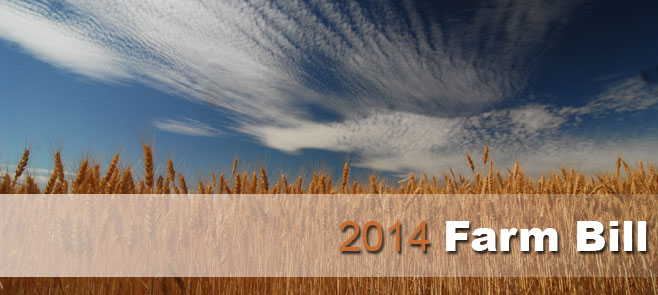
2014 Farm Bill streamlines, consolidates conservation programs
President Obama signed the 2014 Farm Bill on February 7, 2014. Through the new Farm Bill, NRCS offers voluntary conservation programs that benefit both agricultural producers and the environment.
The 2014 Farm Bill streamlines key conservation programs while investing about $18.7 billion in conservation programs offered by USDA’s Natural Resources Conservation Service over the next five years. The bill provides about $3.4 billion for fiscal year 2014 for NRCS-administered programs.
“The new Farm Bill continues to equip farmers, ranchers and forest landowners with the tools they need to address resource concerns while helping the environment,” Caribbean Area State Conservationist, Edwin Almodóvar, said. “NRCS is moving swiftly to get the consolidated and expanded programs implemented.”
A comparison of programs included in the 2008 and 2014 bills is available here. Current contracts enrolled in Farm Bill programs are not affected.
Key program changes include:
- Financial assistance programs: The Environmental Quality Incentives Program, or EQIP, will absorb the Wildlife Habitat Incentive Program and make similar practices available. The Conservation Stewardship Program and Agricultural Management Assistance will be continued.
- Easement programs: The agency’s key easement programs will be merged into a new program called the Agricultural Conservation Easement Program, or ACEP. ACEP includes the former Wetlands Reserve Program, Grasslands Reserve Program and Farm and Ranchlands Protection Program. Funding for wetland and grassland protection expired Sept. 30, 2013, and the 2014 Farm Bill reinstates funding for these critical efforts under ACEP.
- Partnership programs: The agency’s regional conservation efforts have a home in a new program – the Regional Conservation Partnership Program, or RCPP. Critical conservation areas for this new program will be designated by Agriculture Secretary Tom Vilsack. NRCS will also select project areas at the state and national level.
- Conservation Compliance: The 2014 Farm Bill re-established the applicability of the Highly Erodible Land Conservation and Wetland Conservation provisions to crop insurance subsidies, but the Farm Bill did not change in how these were implemented in conservation programs.
“We encourage farmers and ranchers interested in conservation programs to stop by their local NRCS office to learn about available financial and technical assistance,” Almodóvar said. “We’ll help you with a conservation plan and see what conservation systems are the best fit for your land.”
To learn about technical and financial assistance available through conservation programs, visit www.nrcs.usda.gov/GetStarted or your local USDA Service Center. For more on the 2014 Farm Bill, visit www.nrcs.usda.gov/FarmBill.